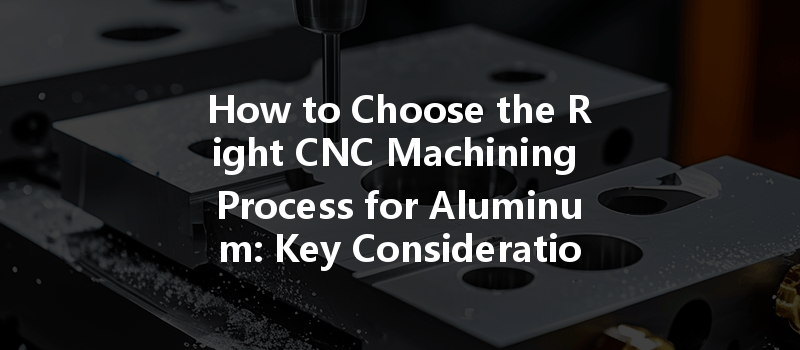*
In the realm of modern manufacturing, the significance of CNC (Computer Numerical Control) machining cannot be overstated. Parade this technology down the production line, and you’ll see its prowess in efficiency, precision, and versatility. Among various materials utilized in CNC machining, aluminum stands out due to its lightweight, durability, and myriad applications ranging from aerospace to automotive components.
At YL Machining, we understand that selecting the appropriate CNC machining process for aluminum is a pivot that can significantly affect the quality, cost, and efficiency of your project. As we delve into the essence of CNC machining for aluminum, we aim to equip you with a comprehensive understanding that can guide your decisions and cater to your specific needs.
Understanding Aluminum and Its Properties
Before making any decisions, it’s imperative to understand the material at hand. Aluminum is an incredibly versatile material that exhibits:
The properties of aluminum are largely influenced by its grade and alloying components. Understanding these subtleties is critical when selecting machining processes.
The CNC Machining Process
CNC machining is a subtractive manufacturing process which involves the removal of material using various tools controlled by computer programs. The essential steps in CNC machining include:
Factors to Consider When Choosing a CNC Machining Process for Aluminum
Selecting the right CNC machining process is akin to configuring a finely-tuned instrument—each element must align harmoniously. Here’s an exhaustive look at the factors that should guide your decision:
Different alloys have distinct machinability properties, influencing the choice of machining process. For instance:
Understanding the specific grade of aluminum you will be using can dramatically affect the machining approach from tool selection to machining speeds.
The end-use of the machined part will dictate the acceptable tolerances and surface finishes. For instance:
Establish precise expectations for tolerances and surface finish to ensure that your CNC machining process aligns with your needs.
The scale of production significantly influences the selection of the machining process:
Understanding the volume required will dictate the investment in tooling, setup time, and costs.
Budget constraints often dictate the feasibility of various machining processes. Key cost considerations include:
A careful examination of these costs will help to analyze which solution provides optimal productivity per budget.

Parts with intricate geometries may require advanced machining techniques. Assessing design complexity includes:
Understanding the complexities will inform the selection of appropriate machinery and tooling.
Common CNC Machining Processes for Aluminum
With these considerations in mind, let’s explore the prevalent CNC machining processes suited for aluminum:
CNC milling is the go-to process for shaping complex parts from solid aluminum blocks.
This process is typically used for cylindrical components.
This method allows for intricate cuts without physical contact with the material.
Utilizing high-pressure water streams mixed with abrasives, this method is excellent for intricate cuts without heat distortion.
Ideal for creating intricate holes and shapes in hard materials, wire EDM is another viable option.
How to Optimize Your CNC Machining Process
Once you have chosen the suitable CNC machining process for your aluminum components, optimizing it can further enhance productivity and quality. Here are some strategies to consider:
By utilizing simulation software, you can predict the most efficient machining paths while maintaining the desired quality. This reduction in unnecessary movements minimizes cycle times.
Evaluate and adjust feed rates, cutting speeds, and depth of cuts. Higher cutting speeds can lead to reduced tool wear, while appropriate feeds will ensure effective material removal without compromising part quality.
Choose the right tool material and coating to enhance durability and reduce friction. Carbide tools, while more expensive, tend to outlast HSS (High-Speed Steel) tools in precision work.
Frequent checks on machine health can prevent downtimes. Keep CNC machines calibrated and promptly address any mechanical issues to maximize operational efficiency.
Investing in operator training ensures that your machining processes are executed to optimal standards, yielding better quality parts over time.
Choosing the right CNC machining process for aluminum production is a multifaceted decision that can shape the success of your projects. By considering factors like alloy type, production volume, complexity, cost, and desired quality, you can develop a tailored approach to machining that maximizes efficiency and effectiveness. At YL Machining, we pride ourselves on our knowledge and expertise in CNC processes, empowering you to navigate the complexities of aluminum machining with ease.
In a world where precision and innovation intersect, our aim is to help you realize your production goals while maintaining the highest standards of quality. From prototype to mass production, we are here to assist you every step of the way, providing solutions that ensure your projects are successful — both in the shop and in the market.
Feel free to reach out with any questions or for further assistance in finding the perfect CNC machining solution for your aluminum needs. Let’s create success together!






